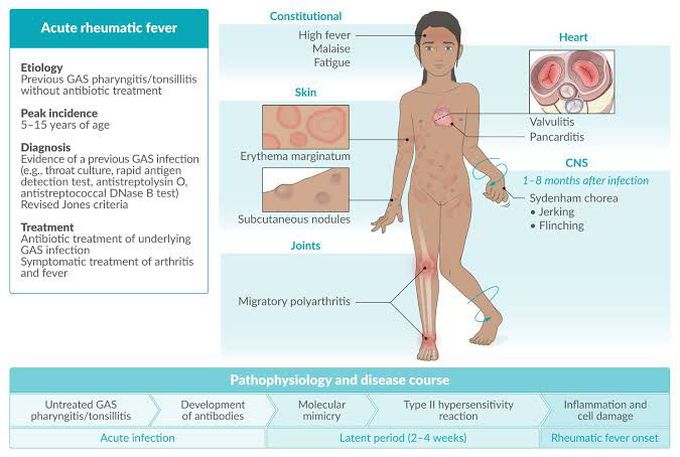


Causes of rheumatic fever
Rheumatic fever can occur after a throat infection from a bacteria called group A streptococcus. Group A streptococcus infections of the throat cause strep throat or, less commonly, scarlet fever. Group A streptococcus infections of the skin or other parts of the body rarely trigger rheumatic fever. The link between strep infection and rheumatic fever isn't clear. It appears that the bacteria trick the immune system into attacking otherwise healthy tissue. The body's immune system typically targets infection-causing bacteria. In rheumatic fever, the immune system mistakenly attacks healthy tissue, particularly in the heart, joints, skin and central nervous system. This faulty immune system reaction results in swelling of the tissues (inflammation). There's little chance of developing rheumatic fever when a strep throat infection is promptly treated with antibiotics and all the medication is taken as prescribed. If a child has one or more episodes of strep throat or scarlet fever that aren't properly treated, rheumatic fever may occur.
What is Rheumatoid Arthritis? | Johns Hopkins RheumatologyAnkylosing Spondylitis | HLA-B27, Pathophysiology, Signs & Symptoms, Diagnosis, TreatmentWhat is scoliosis?Osteosarcoma - Pathology, Symptoms, Diagnosis, TreatmentExternal nose bones

